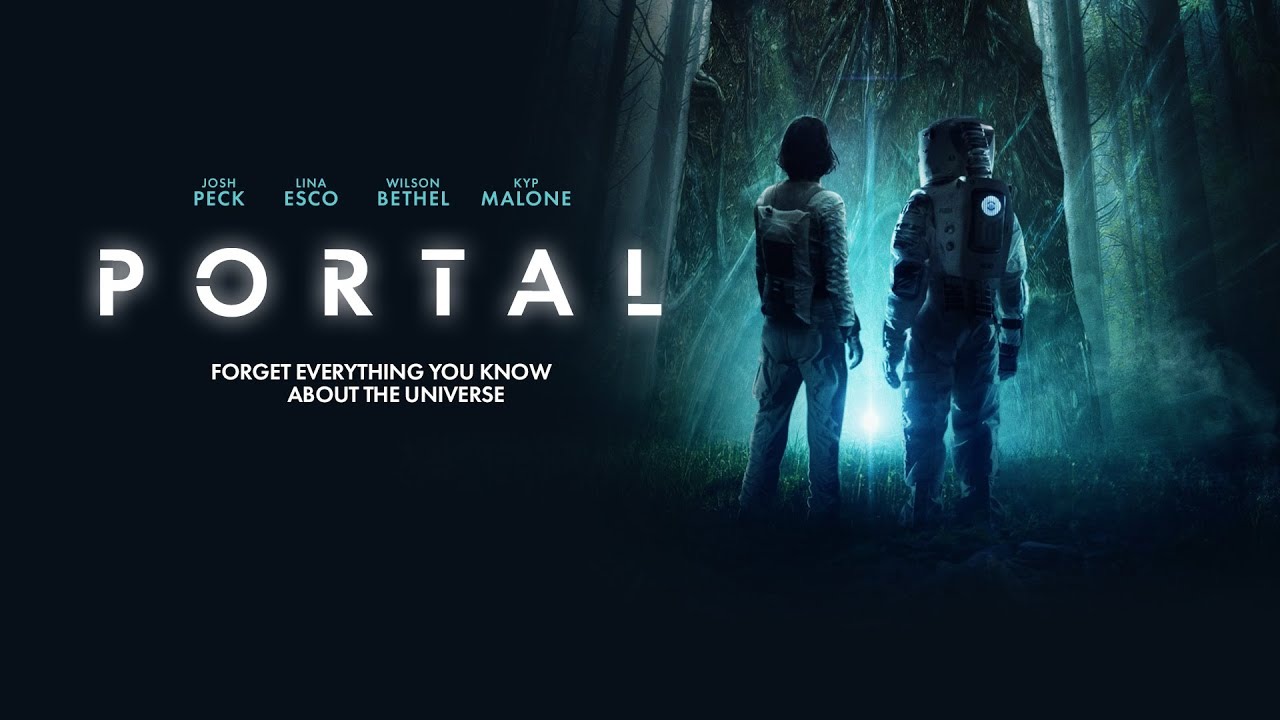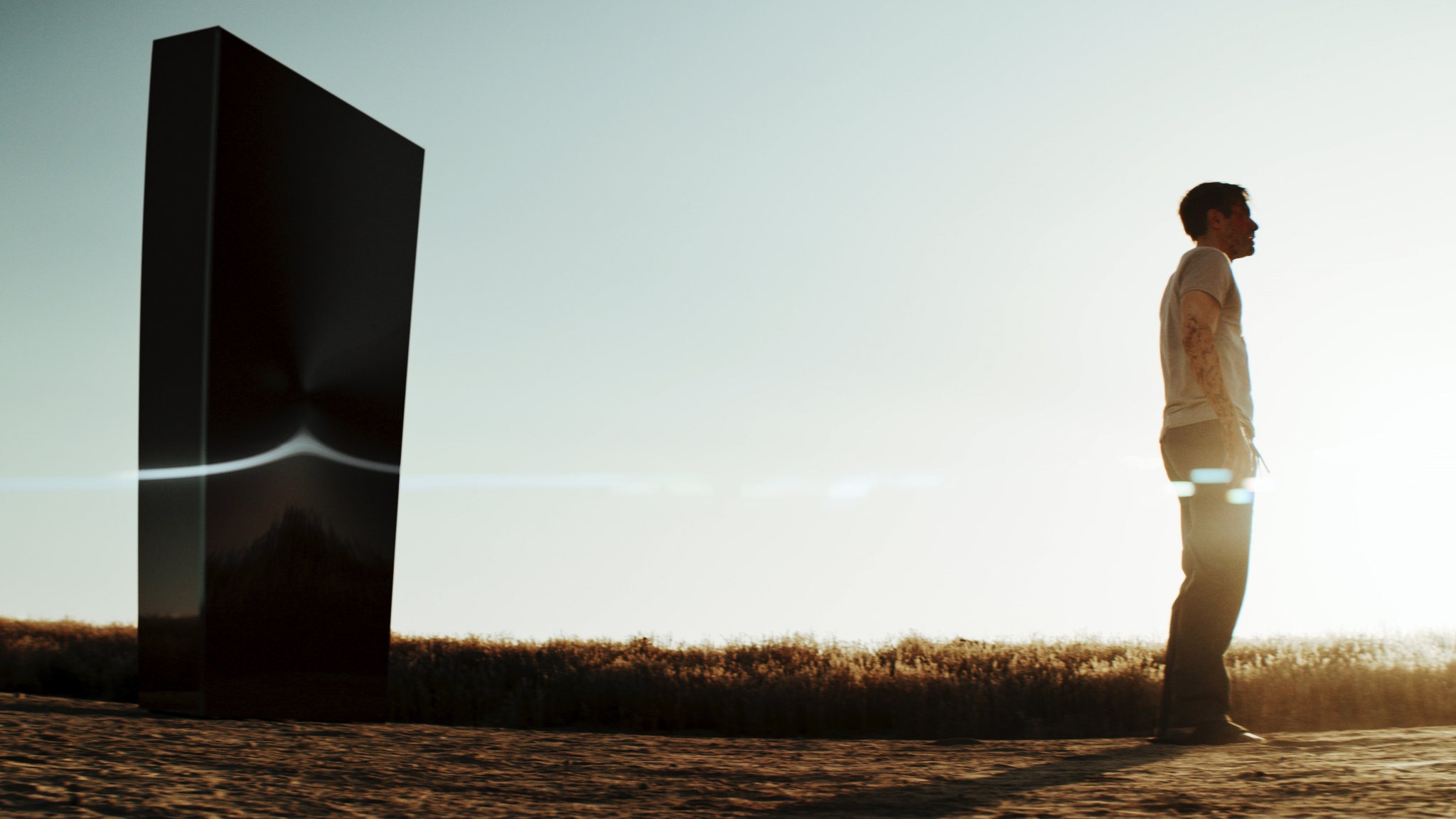Horror anthologies have long been a staple of low-budget indie filmmaking, and in 2019, “Portals” brought a fresh spin to this concept by blending unsettling horror with elements of science fiction. The film consists of four separate segments, each helmed by a different director—or in the case of the tense installment “Call Center,” a pair of co-directors.
Unlike many anthology-style films where the stories stand alone, the stories in “Portals” are all interconnected through a central premise: a sudden worldwide blackout is followed by the mysterious emergence of black monolithic structures across the globe, their purpose unknown.
Rather than presenting its segments in an entirely self-contained format, “Portals” weaves its stories together in a distinctive way. Two of its entries—”Call Center” by directors Eduardo Sanchez and Gregg Hale, along with “Sarah” by Indonesian filmmaker Timo Tjahjanto—operate as independent stories.

However, the film takes a different approach with “The Other Side,” a longer segment directed by Liam O’Donnell, which is split into multiple parts and interspersed throughout. Additionally, the entire movie is framed by a storyline titled “The End,” which opens and closes the film.
With its various interwoven stories and enigmatic details, the film presents numerous elements that leave audiences questioning what they’ve just seen. While “Portals” offers many ambiguous and unsettling moments, some insights can help clarify its puzzling conclusion.
Understanding the Plot of Portals
“Portals” comes to play in a way that might be expected from a film featuring multiple directors, resulting in a series of interconnected yet distinct story. It opens with a fabricated interview featuring two scientists who claim to have created Earth’s first artificial black hole.
However, their groundbreaking achievement comes with unexpected repercussions. Shortly after their announcement, the planet is thrown into turmoil as an unexplained power outage causes widespread hysteria.
One of the most disturbing outcomes of this catastrophe is the sudden materialization of countless black monoliths, which emit low-frequency radiation and seemingly function as gateways to unknown destinations.
These structures exert a strange influence on those who encounter them, with many individuals claiming to hear mysterious voices compelling them to step through. Once someone enters, they are never seen again.
As the film unpacks, various stories explore the impact of these portals, showcasing how they consume people and leave behind more uncertainty than answers. Questions arise regarding their origin—are they linked to the scientists’ black hole experiment, or is there an extraterrestrial force at play? The film never provides a definitive explanation, leaving much open to interpretation.
The Conclusion of Call Center
The first full-length segment, “Call Center,” comes from the duo of Gregg Hale and Eduardo Sanchez, who previously co-directed the “A Ride in the Park” sequence in 2013’s “V/H/S/2.”
This chapter follows a group of 911 operators struggling to handle a surge of frantic emergency calls as citizens report the arrival of the black monolithic structures. Many callers describe witnessing people mysteriously vanishing, while the call center employees attempt to make sense of the escalating chaos.
Among them is Stan (Paul McCarthy-Boyington), an operator who believes he has encountered these phenomena before. Years prior, he had taken a call that described eerily similar occurrences, leading him to obsess over the possibility of a connection.
His supervisor (Shellye Broughton) dismisses his claims, but things take a dire turn when one of the ominous monoliths manifests inside the call center. Overcome with desperation, Stan brandishes a gun and holds his coworkers hostage, insisting that the entity is communicating with him and demanding that they all step through with him.
His colleagues refuse to comply, which appears to anger the portal. In an unexpected twist, the structure prevents Stan from entering. Consumed by frustration, he fires his weapon at the object, but the bullet ricochets and kills him instantly.
The horror doesn’t end there—his supervisor, despite her initial skepticism, becomes entranced by the portal. As responding officers rush into the building, following an earlier silent alarm, the monolith emits a sudden flash of light. When law enforcement arrives, they find the room empty, with no trace of either the portal or those who encountered it.
The Conclusion of Sarah
Timo Tjahjanto directs the segment “Sarah,” which centers on two sisters, Sarah (Salvita Decorte) and Jill (Natasha Gott), living in Jakarta. As they argue in a parking garage—Sarah expressing resentment over feeling ostracized within their family—Jill unexpectedly reveals that she is pregnant.
Their dispute is interrupted when a sudden blackout plunges them into darkness. When emergency lights activate, they find themselves face-to-face with one of the mysterious portals, accompanied by a powerful humming noise that appears to affect only Jill, causing her immense pain.

Before they can escape, Jill falls under the portal’s influence, walking toward it in a trance-like state. Sarah attempts to restrain her, but they quickly realize they are not alone—numerous bystanders are also being drawn toward the monolith, moving in a zombie-like manner.
Some disappear upon entering, while a distraught mother makes the chilling decision to send her baby through the otherworldly gateway before meeting a grim fate herself.
Determined to protect her sister, Sarah fights to bring Jill back to reality. Though she briefly succeeds, the portal is not ready to relinquish its hold so easily. A tense struggle ensues when a possessed stranger attacks them, leading Jill to make a drastic decision—she forces both of them through the portal.
Emerging on the other side, Sarah finds herself in an eerily empty version of the parking garage. Suddenly, Jill appears before her, now seemingly possessed and cradling an infant. Without explanation, she hands the baby to Sarah and vanishes, leaving her with the child and the familial connection she had always longed for.
Key Details About the Other Side
Unlike the other segments, “The Other Side” reveals in multiple parts throughout the film. The opening sequence introduces Adam (Neil Hopkins), Andrea (Phet Mahathongdy), and their daughter Kate (Ruby O’Donnell) as they flee their home despite the ongoing blackouts. However, their escape takes a disastrous turn when Adam inadvertently drives their vehicle straight into one of the newly emerged portals.
After the events of “Call Center,” the film revisits Adam’s story, revealing that he has survived the crash but is now confined to a hospital run by the enigmatic Dr. Markonen (Ptolemy Slocum) and Nurse Leslie (Deanna Russo).
Markonen informs Adam that his right eye must be surgically removed due to injuries sustained in the accident. However, Adam grows suspicious when he is repeatedly denied contact with his wife and daughter.
Following a disturbing medical procedure, Adam realizes that his eye was never actually removed. Instead, when he peels away the bandages, he discovers that his eye has turned black—matching the portals—and appears to possess an eerie awareness.
Soon, he experiences hallucinations of himself speaking in a demonic voice through a mirror, tormenting him with promises of reuniting with his family.



